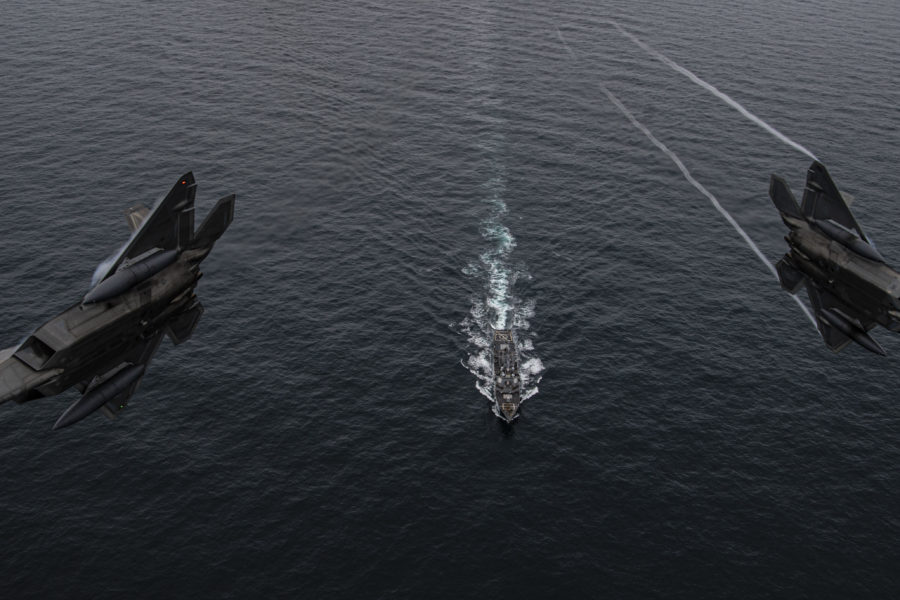Eielson Air Force Base, Alaska—The U.S. flexed its military might in the Arctic region as Air Force B-52 bombers, F-22 fighters, KC-135 tankers, and an E-3 Sentry airborne warning and control system linked up over the southern coast of Alaska as part of the North American Aerospace Defense Command’s Operation Noble Defender on March 16.
The show of force is meant to send a strategic message to potential adversaries that the United States can project air power anytime, anywhere, and that it is ready and capable of defending the homeland. The demonstration comes during heightened tensions with Russia after its brutal attack on Ukraine, now going into its fourth week.
A KC-135 from the Alaska National Guard’s 168th Air Refueling Squadron launched from Eielson Air Force Base, flying south over the snow-covered Alaska Range to King Salmon, nearly 300 miles southwest of Anchorage. There the tanker refueled F-22 Raptors from Joint Base Elmendorf-Richardson. After topping off, the Raptors flew off to practice intercepting two B-52 bombers from Barksdale Air Force Base, La., which were acting as adversary air during the operation; while an E-3 Sentry, also based out of JBER, circled overhead. After the training, the B-52s and F-22s made their way back to the KC-135, flying in formation over the Alaskan mountains behind the KC-135.
The F-22s and tanker linked up once more, flying in circles just 1,500 feet over the Navy’s USS Curtis Wilbur, an Arleigh Burke-class guided missile destroyer operating in the waters off the southern coast.
“This was a really unique mission,” said Lt. Col. Jason Park, the mission director who served as the crew monitor during the flight. “Not often do we get down and work with the Navy that low. Oftentimes we meet with F-18s [to refuel], but rarely do we get down and work with destroyers.”
As crew monitor, Park served as an extra set of eyes providing additional situational awareness for the pilots, who were in constant communication with the bombers, fighters, AWACs, and Navy destroyer, while also navigating both mountainous terrain and low-level flight over water.
“The fact that we were able to send strategic messages to threat countries in a time when the overall situation worldwide is tenuous, at best, is pretty awesome,” said Tech. Sgt. Joseph Newbern, an operations intelligence analyst with the 168th, who also was on the flight. “The fact that we’re not only comfortable doing so, but we are capable, is something I would argue that a lot of these threat countries, a lot of our adversary countries, are not able to do at that level right now.”
A portion of the Alaska-based F-22s remain on alert 24 hours a day, 365 days a year, serving as the first line of defense against any Russian air assets that threaten the homeland or enter the Air Defense Identification Zone surrounding Alaska. Eielson’s tankers support that mission, but because they also continue to support other missions, the Air Force often brings in Guard members for one- or two-month tours to support the alert mission.
The March 16 aircrew included Guard members from Alaska, Wisconsin, and Alabama all working together.
“We’re very fluid, you know, people doing different missions, different jobs all the time,” said Tech. Sgt. Chatham Holt, a boom operator with the 168th Air Refueling Squadron. “Last week, I was flying a local mission where we were flying with P-8 Poseidons out over the Gulf of Alaska from down in Washington, and refueling and doing training missions with them. And, then we’re back here to the alert mission. So, we’re bouncing around a lot. Our guys are very busy.”
NORAD’s Operation Noble Defender is an air defense exercise that runs March 14-17, including a variety of Canadian and U.S. aircraft.














